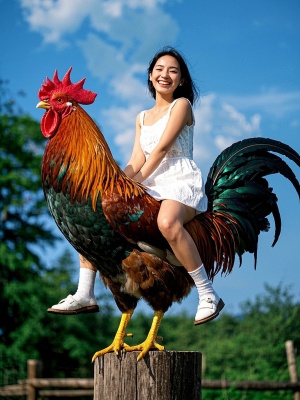Pop Art Funny: Exploring the Playful Side of Pop Culture
Pop art funny is a vibrant and engaging subgenre of pop art that combines humor with iconic pop culture references. Emerging from the 1950s and 1960s, this style takes everyday objects and transforms them into witty, exaggerated artworks that make us laugh while making us think. In this article, we'll explore the key characteristics of funny pop art, its most famous practitioners, and how modern AI tools like those on MediaAI.art are helping create new forms of humorous pop art.
The Origins of Funny Pop Art
The pop art movement began as a reaction against the seriousness of abstract expressionism, with artists like Andy Warhol and Roy Lichtenstein leading the charge. But while their work was often ironic, a subset of artists took this further into outright humor.
Key Characteristics of Funny Pop Art
- Exaggerated facial expressions on familiar characters
- Playful twists on commercial products and advertisements
- Unexpected combinations of pop culture icons
- Bright, bold colors that enhance the comedic effect
- Text bubbles or captions that add humorous commentary
Masters of Pop Art Humor
Several artists have become particularly known for their ability to inject humor into pop art. Keith Haring's dancing figures, for example, brought a joyful energy to the movement, while Jeff Koons' oversized balloon animals playfully challenged notions of high art.
Contemporary artists continue this tradition, often using digital tools to create funny pop art. Platforms like MediaAI.art's gallery showcase how modern technology can enhance this playful artistic approach.

Creating Your Own Funny Pop Art
With today's AI tools, anyone can experiment with creating humorous pop art. Here's a simple process:
- Choose your subject - a celebrity, product, or cultural icon
- Decide on your humorous angle or twist
- Use AI tools to generate exaggerated or stylized versions
- Add text or other elements to enhance the joke
- Share your creation on social media or print it for display
For those interested in learning more about digital art creation, this AI art guide provides excellent starting points.
The Psychology Behind Funny Pop Art

Why does funny pop art resonate so strongly? Psychologists suggest several reasons:
- It provides social commentary in an accessible way
- The humor makes art less intimidating
- Familiar imagery creates instant recognition
- The bright colors trigger positive emotional responses
Conclusion: The Enduring Appeal of Pop Art Funny
From its mid-century origins to today's digital creations, funny pop art continues to captivate audiences by combining visual appeal with humor. Whether you're admiring classic works or creating your own with modern tools like those at MediaAI.art, this playful art form offers endless possibilities for creative expression and laughter.
For further reading on related art movements, check out the Tate Museum's pop art resources or explore MoMA's pop art collection.